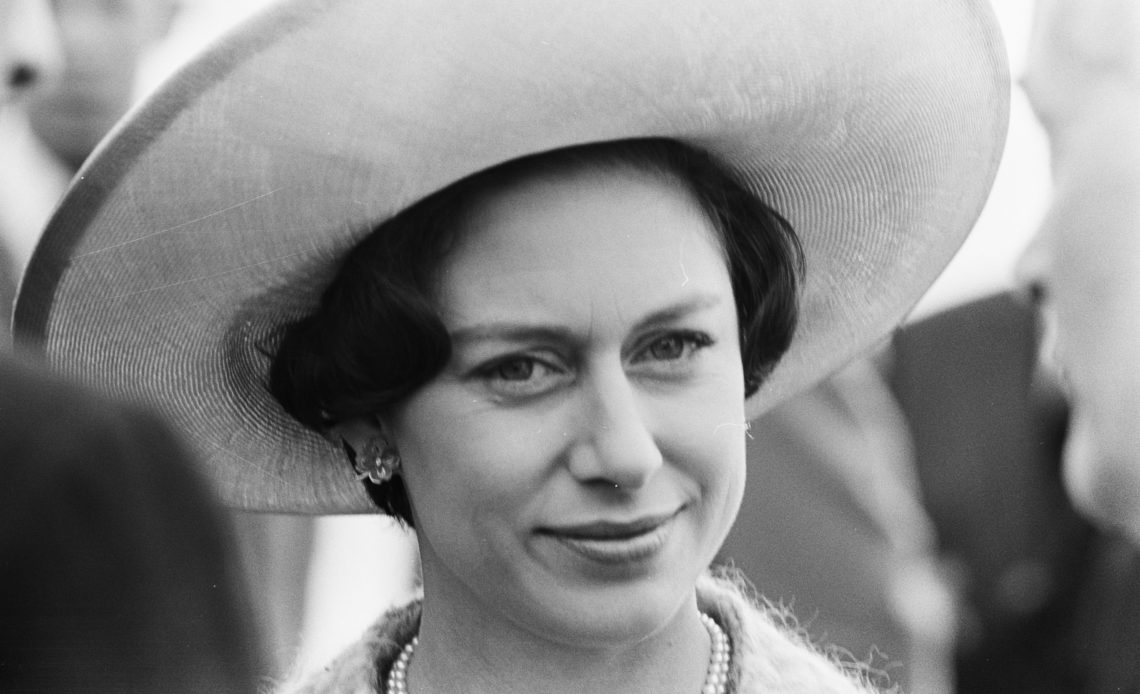
Princess Margaret, younger sister to Queen Elizabeth II, passed away in 2002, shortly before their mother. The later years of her life were quiet and difficult, due to strokes, surgeries, and accidents. However, she was a popular royal and led a busy life as sister to The Queen.
Princess Margaret Rose was born to the Duke and Duchess of York on 21 August 1930, at Glamis Castle. The younger sister of Princess Elizabeth, the Duke and Duchess were thrilled with the birth of their second daughter who was fourth in line to the throne (after her uncle, her father, and her sister). Margaret was baptised in the chapel at Buckingham Palace on 30 October 1930. The Yorks spent much of Margaret’s early years at 145 Picadilly and The Royal Lodge at Windsor, where “we four” were a close-knit family.
The Duchess of York modelled Margaret and Elizabeth’s education on her own; they had a governess, Marion Crawford, who taught the girls basic skills, including dancing, French, and Margaret would later criticise her mother for not giving a standard education of the time and allowing her to attend school.
Upon her uncle’s abdication in 1936, her father became King George VI. Margaret was then second in line to the throne, after her sister Elizabeth. During the Second World War, the princesses spent most of their time at Windsor Castle, away from the continual air raids in London. It was suggested that the girls be sent to Canada for safe keeping, but their parents refused, wanting to keep the family together. While at Windsor, Margaret and Elizabeth would put on plays and performances, like Aladdin and Cinderella. At the end of the war, the whole family appeared on the balcony of Buckingham Palace, with the two princesses slipping away to celebrate in the crowds.
Margaret was one of Princess Elizabeth’s bridesmaids in her 1947 wedding to Prince Philip. After Prince Charles and Princess Anne were born, in 1948 and 1950 respectively, Margaret was then fourth in line to throne.
As a young royal, Margaret was well-placed to be fashionable. She was one of the first notable British women to wear Dior. The French designer would create her famous 21st birthday dress that was included in Dior: Designer of Dreams at the Victoria and Albert Museum. She would continue to make waves with her fashion choices, including plunging necklines and daring cuts.
Elizabeth was George’s pride, but Margaret was his joy, and she was devastated upon his death in 1952. She became incredibly close with Group Captain Peter Townsend, who was an equerry for her father and became her mother’s Comptroller. Although she was in love with him, the relationship was doomed as he was married at the time. He did divorce his wife, but the government and cabinet was not willing to allow Margaret to marry a divorced man after her uncle’s abdication crisis. She publicly announced that she would no longer see Townsend and he spent the rest of his life in Brussels. Margaret would say decades later that she still found Townsend charming.
Margaret ran with a fast and artistic set, counting numerous authors, musicians, and actors in her friend group. She met Anthony Armstrong-Jones, a photographer, at a wedding and again at a party. They married in 1960 at Westminster Abbey, with Prince Philip giving her away. Norman Hartnell designed her wedding gown; it is still regularly named as one of the most fashionable royal wedding dresses. After they married, he was given the title of Earl of Snowdon, a title now held by their son, David.
The couple were a mis-match and had famously brutal arguments with each critical of the other. They quickly grew to dislike each other, spent a great deal of time apart, and each had affairs before they divorced in 1978. Margaret’s most famous affair was with landscaper Roddy Llewellyn, who was 17 years her junior. The affair began in 1973 but wasn’t made public until pictures were published in 1976. She received an incredible amount of criticism for pursuing a younger man.
Margaret continued to lead a busy and productive royal life throughout her adulthood. Although she often felt like she was directionless, she held countless patronages. Her passion for the arts is clearly seen in her patronages, as she was the first President of the Royal Ballet and the President of the Sadler’s Wells Foundation. She was also the patron of many organisations highlighting child welfare, and many hospitals, nursing organisations, and other health-focused groups.
Sadly, Margaret had several health problems of her own. She was a heavy smoker from a young age and actually had to have a portion of her left lung removed in 1991. She was hospitalised in 1993 with a serious case of pneumonia and had a stroke in 1998. In 1999, she suffered a stroke while in the bath and badly burned her feet, and she was forced to use a wheelchair for quite some time. In 2001, she had several more strokes. She was largely paralysed on the left side of her body and lost some of her vision.
Margaret passed away on 9 February 2002 at King Edward VII Hospital. Her funeral was held on 15 February 2002 – 50 years after her father’s funeral. Her mother, Queen Elizabeth the Queen Mother, died less than two months later.

